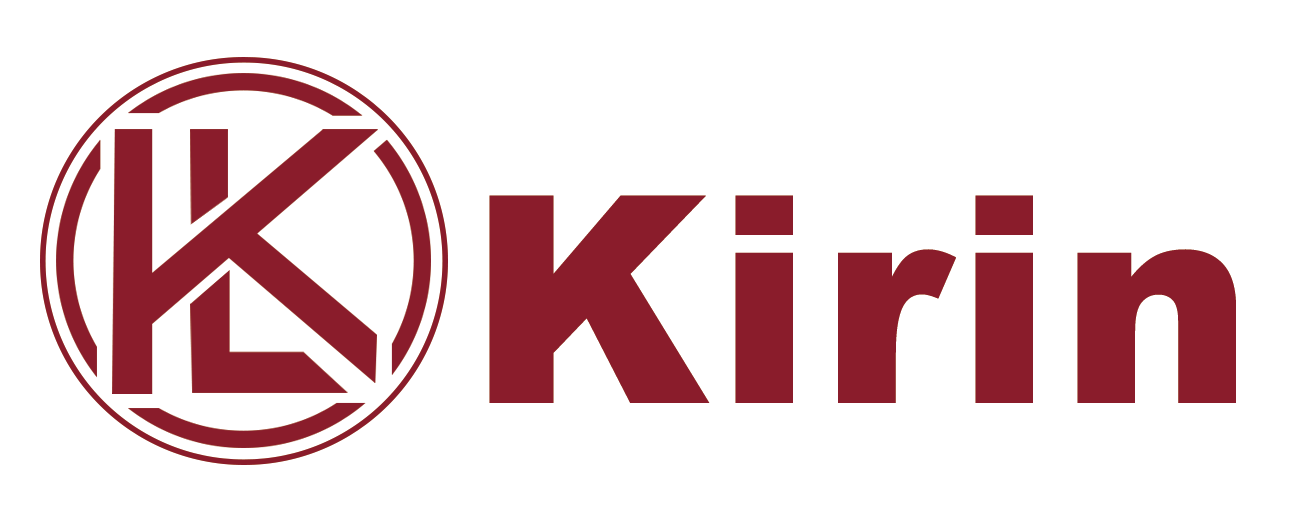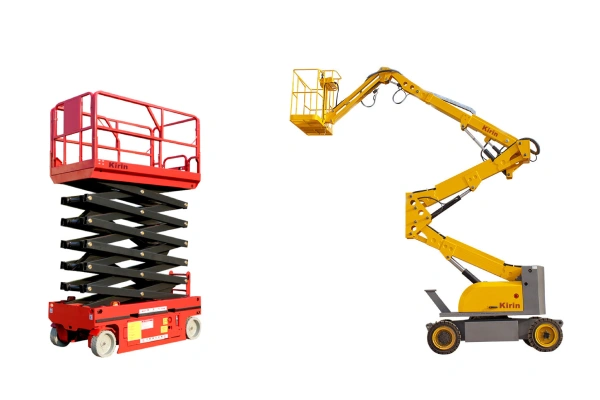Working at height presents unique challenges, demanding specialized equipment that prioritizes safety and efficiency. Among the most versatile of these tools is the boom lift, an aerial work platform designed to extend workers and their equipment to elevated positions. But with various types of boom lifts available, how do you know which one is right for the job? This guide will break down the different types of boom lifts and their specific applications, helping you make an informed decision.
Understanding What is a Boom Lift
At its core, a boom lift is a hydraulic aerial work platform that features a platform or bucket at the end of a jointed or telescopic arm (the “boom”). This arm is mounted on a base, which can be stationary, self-propelled, or towable. They are designed to provide both vertical and horizontal reach, making them indispensable for a wide range of tasks where ladders or scaffolding simply aren’t practical or safe.
What Types of Boom Lifts Are Available?
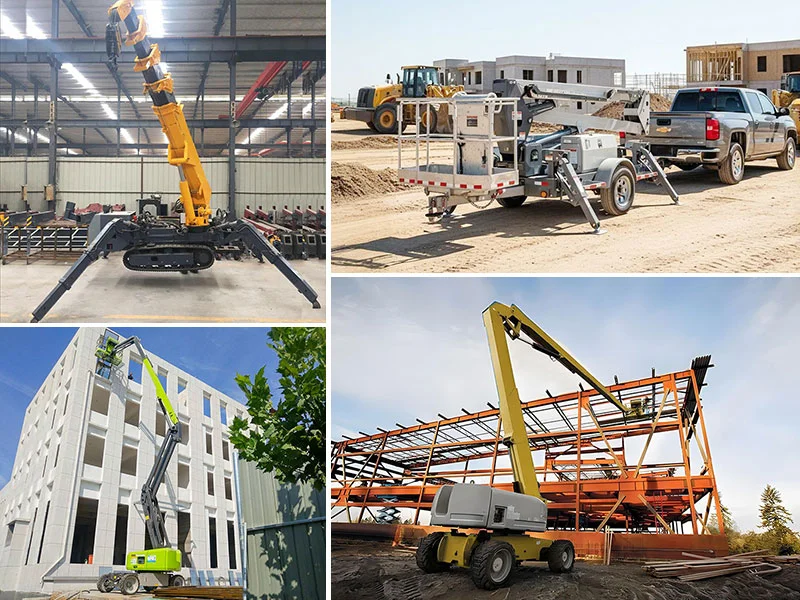
When discussing types of boom lifts, it’s important to differentiate between their design and power source, as these factors significantly impact their functionality. Here are some of the most common boom lift types you’ll encounter:
Crawler Spider Boom Lift
The crawler spider boom lift, often referred to as a tracked boom lift or boom lift on tracks, is known for its compact design and excellent maneuverability, particularly on uneven or delicate terrain. Its multi-jointed legs (outriggers) provide stability, making it resemble a spider when deployed. These types of boom lifts are perfect for indoor use where floor protection is crucial, or for outdoor jobs on soft ground, slopes, or confined spaces. Their compact transport dimensions also make them easy to move between job sites.
Electric Telescopic Boom Lift
Electric telescopic boom lifts are characterized by a straight, extendable boom that offers maximum horizontal outreach. These types of boom lifts are typically powered by batteries, making them ideal for indoor applications where noise and emissions are a concern. Their smooth operation and precise positioning make them suitable for tasks requiring high reach and stable platforms, such as warehouse maintenance, electrical work, and certain construction tasks.
Electric Articulating Boom Lift
An electric articulating boom lift, also known as an articulated boom lift, features a boom with multiple sections that “articulate” or bend. This unique design allows the operator to maneuver the platform up, over, and around obstacles, providing exceptional versatility in challenging environments. Like their telescopic counterparts, these types of boom lifts are often battery-powered, making them suitable for indoor use. The ability to reach difficult-to-access areas makes articulated boom lifts popular for maintenance, installation, and repair work in complex industrial or commercial settings.
Towable Boom Lift
The towable boom lift (often a towable articulating boom lift) is designed for easy transportation from one job site to another. As the name suggests, it can be hitched to a standard vehicle, making it a cost-effective option for businesses that need to transport their equipment frequently. These types of boom lifts are typically smaller and lighter than self-propelled models, making them suitable for tasks like tree trimming, exterior painting, and light construction work where quick deployment and mobility are key.
Selecting the Right Boom Lift
Choosing among the various types of boom lifts requires careful consideration of several factors:
- Working Height and Outreach: Determine the maximum height and horizontal distance you need to reach.
- Work Environment: Indoor or outdoor? Smooth or rough terrain? Confined space or open area?
- Power Source Requirements: Do you need an electric, diesel, or hybrid model? Are emissions a concern?
- Weight Capacity: Ensure the boom lift can safely support the weight of workers, tools, and materials.
- Maneuverability: How much space do you have to operate? Do you need to navigate around obstacles?
- Transportation Needs: How will you get the boom lift to and from the job site?
Understanding these factors will help you narrow down the boom lift types that best suit your project.
How to Drive a Boom Lift
Operating a boom lift requires proper training and certification. While specific controls vary between models and types of boom lifts, the fundamental principles remain the same:
- Pre-Operation Inspection: Always conduct a thorough inspection before operation, checking tires, fluids, controls, and safety features.
- Leveling: Ensure the machine is on a stable, level surface. Outriggers, if present, must be properly deployed.
- Platform Controls: Use the joystick and other controls in the platform to raise, lower, extend, and rotate the boom.
- Ground Controls: Most boom lifts also have ground controls for emergency situations or for an operator to move the machine from the ground.
- Safety Protocols: Always follow manufacturer guidelines, wear appropriate PPE, and be aware of your surroundings. Never exceed the rated capacity.
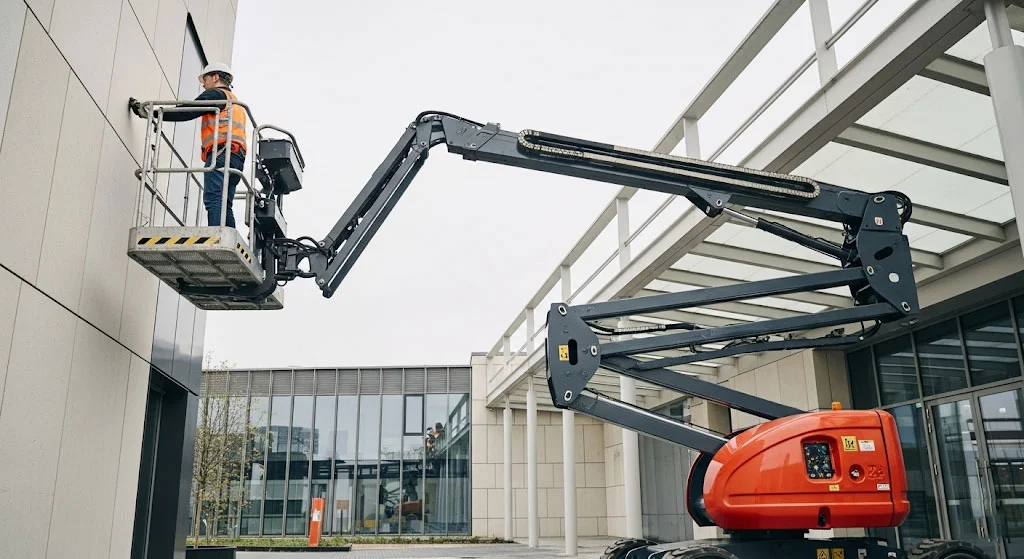
Boom Lift Uses and Advantages
The versatility of the different types of boom lifts makes them invaluable across various industries:
- Construction: Reaching high facades, installing structural components, general maintenance.
- Maintenance: Building repairs, window cleaning, HVAC system access, light fixture replacement.
- Arboriculture: Tree trimming and removal, especially for tall trees.
- Telecommunications: Installing and maintaining antennas and communication lines.
- Utilities: Working on power lines, streetlights, and other infrastructure.
- Filming and Events: Providing elevated camera angles or setting up stage equipment.
The primary advantages of using types of boom lifts include enhanced safety compared to ladders, increased efficiency due to greater reach and stability, and the ability to access difficult-to-reach areas.
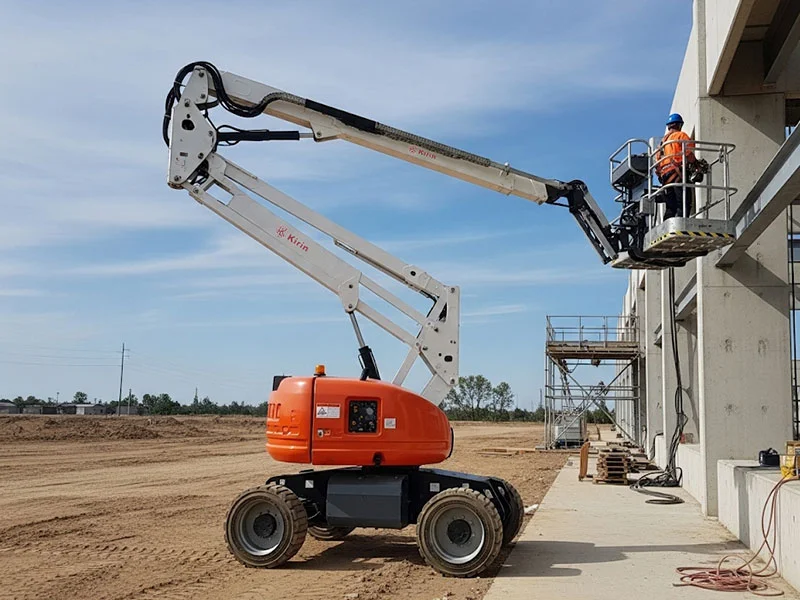
Boom Lifts in Action
Imagine a crew working on the exterior of a high-rise building. An electric telescopic boom lift might be chosen for its straight, extensive reach to access upper windows for cleaning. Meanwhile, in a cluttered factory, an articulated boom lift could weave its way through machinery to perform overhead repairs. For a landscaping company moving between several residential properties, a towable boom lift offers the perfect balance of mobility and reach for tree pruning. And when working on delicate flooring inside a shopping mall, a crawler spider boom lift provides the necessary reach without damaging the surface. These real-world scenarios highlight the importance of understanding the distinct capabilities of each of the types of boom lifts.
Learn How to Operate a Boom Lift Now
Given the power and potential risks associated with operating boom lifts, comprehensive training is not just recommended, it’s often legally required. Proper training ensures operators understand the specific functionalities of different types of boom lifts, safety protocols, and emergency procedures. Investing in training not only protects your workers but also maximizes the efficiency and lifespan of your equipment.
Conclusion
From the nimble crawler spider boom lift to the far-reaching telescopic boom lifts, the array of types of boom lifts available offers solutions for nearly any elevated task. By understanding the unique characteristics and applications of each, you can select the perfect equipment to ensure safety, efficiency, and success on your next project. Remember, the right tool for the job is always the safest and most productive.
FAQs
Q: What is the main difference between an articulated boom lift and a telescopic boom lift?
A: An articulated boom lift has a jointed arm that bends, allowing it to navigate around obstacles. A telescopic boom lift has a straight, extendable arm, providing maximum horizontal outreach.
Q: Are all boom lifts electric?
A: No, while many types of boom lifts, especially for indoor use, are electric, diesel and bi-energy (hybrid) models are also common, particularly for outdoor and heavier-duty applications.
Q: Can I rent different types of boom lifts?
A: Yes, most equipment rental companies offer a wide range of boom lift types to suit various project needs. This is often a cost-effective solution for businesses that don’t require frequent use.
Q: What safety precautions should I take when operating a boom lift?
A: Always wear a fall arrest harness, maintain a safe distance from power lines, ensure the ground is level and stable, never overload the platform, and always follow the manufacturer’s operating manual and all safety regulations.
Q: What’s a spider lift?
A: A spider lift is another common name for a crawler spider boom lift or tracked boom lift, characterized by its compact size and outriggers that resemble spider legs.
